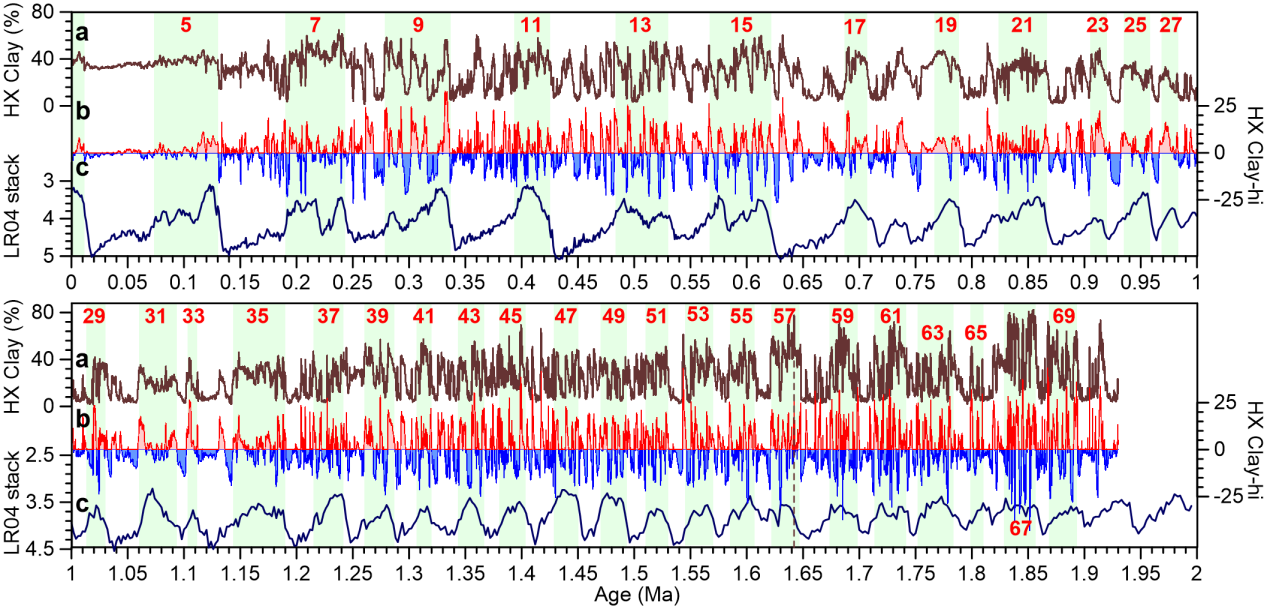
A recent study published in the Proceedings of the National Academy of Sciences (PNAS) by researchers from the Institute of Earth Environment of the Chinese Academy of Sciences reveals that the East Asian summer monsoon underwent frequent and rapid shifts even during past warm periods that were previously thought to be climatically stable.
The research team analyzed a 512-meter sediment core from the Weihe Basin in central China to reconstruct a two-million-year climate history. Their findings indicate that millennial-scale monsoon fluctuations were common during interglacial periods and were not driven by dynamics of high-latitude ice sheets but rather by low-latitude solar insolation forcing.
"Our results challenge the notion of climatic stability during warm periods," said Prof. SUN Youbin, the first author of the study. "They highlight the role of precession-paced solar forcing, independent of large ice sheet presence, in triggering abrupt hydrological shifts."
Through spectral analysis of paleolake sediment proxies, the study revealed strong patterns occurring every 11,000 and 5,500 years—signatures of peaks in hemispheric solar radiation—which likely drove alternating megadroughts and wet intervals in East Asia.
Furthermore, the study suggests that under current orbital configurations, the strength of the East Asian monsoon may decline in the coming millennia, increasing the risk of prolonged droughts. By uncovering new aspects of interglacial climate dynamics, this research underscores the importance of low-latitude mechanisms for making robust hydroclimatic projections.
This work was supported by the National Natural Science Foundation of China, the Strategic Priority Research Program of the Chinese Academy of Sciences, and the Second Tibetan Plateau Scientific Expedition and Research Program.

Abrupt climate changes over the last 2 Ma. (a) Clay content of HX core; (b) Strong (red) and weak (blue) monsoon events inferred from high-frequency component of HX clay content; (c) Benthic δ18O stack. (Image by SUN, et al)

86-10-68597521 (day)
86-10-68597289 (night)

52 Sanlihe Rd., Xicheng District,
Beijing, China (100864)

